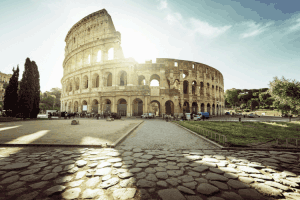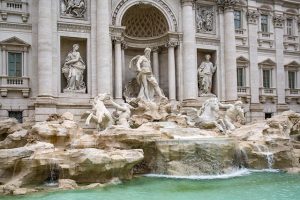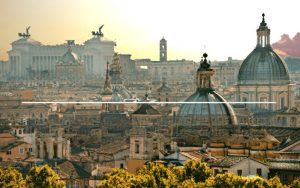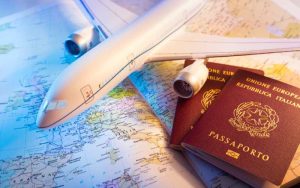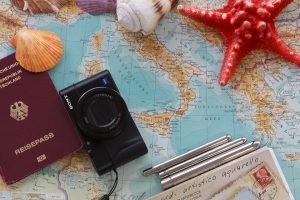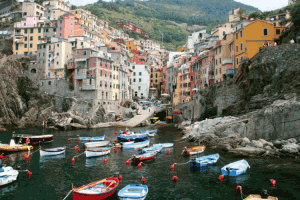Craving some pizza and pasta, and maybe a vacation to a beautiful country? Then Italy is the country to set your foot in for the vacation of a lifetime along with some delicious food. As is the case, the visa process is not that easy but it is obviously not out of the question if you apply correctly according to the visa criteria of Italy for the country that you belong to. So let’s find out more about which country need visa for Italy and the processes to apply.
Understanding Italy’s Visa Policies
Italy is one of the Schengen area countries. Hence requirements are unalike for an Italy Visit Visa for nations that belong to the area and the ones that do not.
Schengen Area Citizens: Natives of the nations belonging to this area generally don’t need a visa for stays under 90 days. They can travel freely with a valid passport. Schengen area countries are as follows:
Austria Hungary Poland
Belgium Iceland Portugal
Croatia Italy Slovakia
Czechia Latvia Slovenia
Denmark Liechtenstein Spain
Estonia Lithuania Sweden
Finland Luxembourg Switzerland
France Malta
Germany Netherlands
Greece Norway
Under the new Italy visa policy, ETIAS visa is introduced as the travel authorization mechanism for these visa-exempt countries.
Regions that need to apply for an Italian Visa
As we picked up from above, natives of some nations require a visa to visit Italy, while some do not. We have a list here for you to find if your country requires an Italy visit visa.
| Region | Country |
| Africa | Algeria, Angola, Benin, Botswana, Burkina Faso, Burundi, Cameroon, Cape Verde, Central African Republic, Chad, Comoros, Congo, Congo (Democratic Republic), Djibouti, Equatorial Guinea, Gabon, Gambia, Ghana, Guinea, Guinea-Bissau, Ivory Coast, Liberia, Libya, Madagascar, Malawi, Mali, Mauritania, Morocco, Mozambique, Namibia, Niger, Nigeria, Rwanda, Senegal, Sierra Leone, Somalia, South Africa, Sudan, Swaziland (Eswatini), Togo, Tunisia, Zambia, Zimbabwe |
| Asia | Afghanistan, Armenia, Azerbaijan, Bahrain, Bangladesh, China, India, Indonesia, Iran, Iraq, Israel, Jordan, Kazakhstan, Kyrgyzstan, Kuwait, Laos, Lebanon, Malaysia, Maldives, Mongolia, Myanmar, Nepal, North Korea, Oman, Pakistan, Palestine, Philippines, Qatar, Saudi Arabia, Syria, Tajikistan, Thailand, Timor-Leste, Turkmenistan, Uzbekistan, Vietnam, Yemen |
| Central and South America | Belize, Bolivia, Cuba, Dominican Republic, Ecuador, Guyana, Haiti, Suriname |
| Europe | Belarus, Russia |
| Oceania | Fiji, Papua New Guinea |
Types of Italy visa
Suppose your country is also named in the list above. What now? Now pick out the kind of visa that best suits your purpose of visit.
Schengen Visas
Uniform Schengen Visa (USV): This is the most recurrent visa for short stays in Italy.
It can be:
- Single-entry: Allows one entry into the Schengen zone within the validity period.
- Double-entry: Allows two entries into the Schengen zone within the validity period.
- Multiple entry: Grants multiple entries into the Schengen area within the valid period.
- Airport Transit Visa (Type A): Needed when your terminus is somewhere else but you have a layover in the Schengen area. Basically, it is a visa for the airport. It’s not valid for leaving the airport.
Long Stay Visas
- National Visas: A specific national visa is called for in case of a stay in Italy longer than 90 days. These visas are categorized by purpose:
- Study Visa: You’ll need an acceptance letter from an Italian institution for Italy student visa documentation. Proof of sufficient financial resources is also necessary.
- Work Visa: Needed if you have a job offer, you can apply for Italy work permit from an Italian employer.
- Elective Residence Visa: For individuals with a stable income who wish to reside in Italy without necessarily working. They need to demonstrate financial self-sufficiency.
- Family Reunion Visa: This allows you to join close family members who are Italian citizens or legal residents. Documentation proving the relationship is required.
Italy Visa Document Requirements
After picking out the visa suitable for your purposes of visiting, the next step is to collect the Italy visa document requirements. Although all types have different necessities, here we have a list of some of the common ones required:
- Passport: Set the seal on having a passport with sufficient validity beyond your intended stay in Italy.
- Visa Application Form: Download the application form. Fill out completely and accurately. You can obtain it at the website of the Italian consulate or embassy in your home country.
- Picture Perfect: Possess two passport-sized photographs. Sounds like a tongue twister! They should be recent and with a clear and visible face. There should be a completely white background without any patterns or shadows. They should be of high quality and taken within the last six months. Do not forget to look good though!
- Safety First: You must have travel medical insurance. It should cover at least €30,000 for medical expenses throughout the Schengen Area.
- Proof of a Roof above your Head: You will need to provide documentation showing where you will be staying in Italy. For example- hotel reservation confirmation.
- Financial Stability: You have to provide proof of sufficient funds to show that you are good to be on your own during your stay if you plan to travel to Italy. It helps the authorities be sure that you will not depend on their resources during your visit. Have enough funds along with a well-planned budget to show that you can be left alone with your bank balance while in Italy.
- Confirmed Return Ticket: A planned exit from the country helps to ensure that you are on board with Italy’s immigration requirements.
- Employment: If you are doing a job you may need to provide a letter from your employer. It can state stuff such as your salary and position.
- Student Status: If you still are in school you might need a letter from them. This is a proof of you being a student.
- Pension: You may need proof of your pension income if you are retired.
- Minors: If you are traveling with minor children you may need to provide additional documents. For example- their birth certificates and a letter of consent from the other parent if they are not traveling with both parents etc.
- Business Travelers: Are you traveling to Italy for business purposes? You may need to provide a letter of invitation from your business partner in Italy.
Visa Application Process
Now you know about the different types of visas offered by Italy and the documents that you need. Let’s know How to Apply Italy Visa:
- Know your Visa Type: The first step is to identify the right visa Italy visa types and requirements.
- Fetch your Files: The documents needed for your visa application will vary depending on the visa type and your situation. We have laid out a general list. You might need some extra documents based on your specific requirements.
- Fill your Form: Get your form at the Official Italy Visa website. Complete it with accurate details.
- Arrange your Appointment: Give a call to your local Italian consulate or visa application center to schedule an appointment for visa submission.
- Ace the Appointment: Ensure your attendance. Reach for your appointment on the scheduled date and time. Bring all your required documents. Be prepared to answer any questions. There might be a visa fee to pay here.
- Biometric Data Collection (if applicable): Some applicants may be required to provide fingerprints and a photograph during the appointment for biometric data collection.
- Visa Interview: An interview might be part of the process. Although it may or may not occur. Be prepared to answer some questions. For example- about your trip to Italy and your purpose for visiting, etc.
- Wait for Processing: Processing times can vary as it depends on various factors. For example- your nationality, the type of visa, etc.
- Visa Collection: You will be notified by the consulate or visa application center. If approved they will inform you on how to collect your passport and visa.
Tips for Smooth Visa Application
Prepare Like It Is an Exam
- Planning and Plotting: Start the application process well in advance of your trip, especially if you need to collect specific documents or attend an interview. Visa processing times can vary, so factor this in while planning.
- Gather Information: Be up to date with Italy’s visa policies.
- Know Your Visa Type: Determine the appropriate visa type based on your trip purpose. For example- tourist, business, study, etc. Each has specific requirements.
Organize Your Documents
- Tick all Boxes: The Italian consulate or embassy website should have a checklist. It consists of the required documents for your specific visa type. Ensure you have all the necessary documents and that they are valid. For example- passport validity exceeds your stay.
- Organize and Translate: Make clear copies of all required documents. Some documents might need translation into Italian by a certified translator. So check the requirements.
Application Process
- Complete the Form Carefully: Download and fill out the application form from the consulate or embassy website. Do it accurately and completely.
- Schedule the Appointment: You can contact the consulate or visa application center to schedule an appointment for visa submission. Some consulates allow online appointments.
- Double-checking never hurts: Before your appointment, double-check that you have all the required documents and that they are properly filled out and translated if necessary.
Be Prepared for the Appointment
- Dress like a Professional: Dress appropriately for your appointment. Professional behavior creates a positive impression.
- Bring Supporting Documents: Carry any additional documents that might strengthen your application, like proof of strong ties to your home country. For example- employment letters, property ownership, etc.
- Be Clear and to the point: Answer questions clearly and briefly in the interview if applicable. Be prepared to explain your travel plans and purpose for visiting Italy.
We believe you might be ready for your dream trip to Italy without any obstacles and a smooth visa process. Yes, it might be a tedious process. But it is all for good and is worth it. Do not forget to enjoy the beautiful country by being busy clicking pictures after all that trouble you went through to go in the first place. Safe travels!
